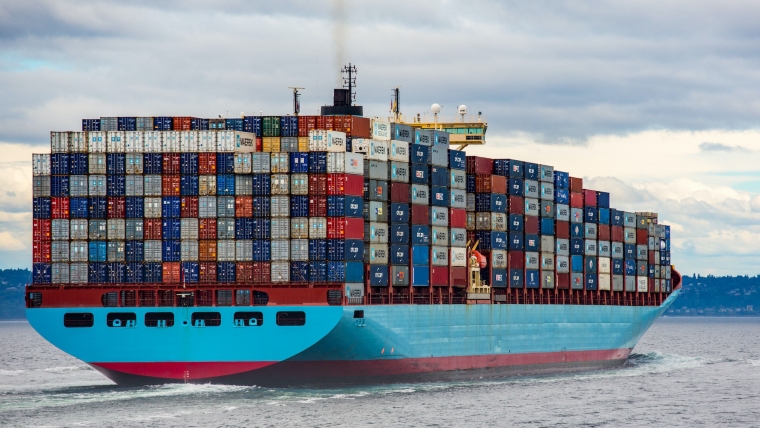
New Zealand’s seasonally adjusted current account deficit shrunk $1 billion dollars during the June quarter, declining to $6.7 billion from $7.7 billion in the three months prior, Statistics NZ says.
A current account deficit reflects that New Zealand is spending more than it's earning overseas.
The deficit ranged between 1% and 4% of gross domestic product (GDP) in the decade prior to the pandemic, but expanded to be over 8% in late 2022.
The Treasury has said this was due to the disruption caused by the pandemic, poor agricultural production, and higher global interest rates.
But now, the turnaround has begun and the deficit has shrunk over the past two quarters.
At $29.8 billion, the annual current account deficit was 7.5% of GDP in June 2023, compared to 8.8%, or $33.8 billion, at the end of last year. This was slightly better than had been forecast by many economists which expected the deficit to land just below 8% of GDP.
Miles Workman, an economist at ANZ Bank, said the narrower current account deficit was “welcome news” but the accounts were still “severely out of balance”.
“From this starting position, New Zealand is still vulnerable to a terms of trade shock and/or drought that could result in unsustainable deficits sticking around for too long,” he said.
Using the percentage to GDP measure shows how significant the nominal deficit is in the context of the overall economy.
While 7.5% is an improvement on the previous four quarters, the deficit remains at levels not seen since 2008. The current account deficit ranged between 6.6% and 7.8% from 2006 until 2009.
In nominal terms, the annual trade deficit widened by $1.2 billion in the year ended June 2023 as NZ imports increased by $8.4 billion to $85.8 billion.
“Fuel, including diesel, petrol, and jet fuel, was the main contributor to the increase in goods imports, driven by increases in both the price and volume of fuel,” a Stats NZ manager, Paul Pascoe said.
Good exports increased $5.5 billion to $73.3 billion, particularly driven by dairy products, including milk powder, butter, and cheese.
Service export growth outpaced imports with a $9.8 billion increase to $23.8 billion, while imports grew $7.4 billion to $29.9 billion.
Spending by overseas visitors in New Zealand increased $6.7 billion to $10.3 billion, while the amount spent by New Zealanders overseas increased just $3.5 billion to $5.7 billion.
“In the June 2023 year, overseas visitors increased their spending almost twice as much as New Zealanders increased their spending overseas,” Pascoe said.
The primary income deficit widened by $1.3 billion to $11.6 billion, showing overseas investors were earning more from New Zealand than vice versa.
Income earned by overseas investors increased $3.2 billion in the year ended 30 June 2023, while income earned by New Zealand investors from overseas increased $2.0 billion.
“The recent increases in interest rates have contributed towards larger interest payments to foreign investors on their loans, deposits, and bonds held in New Zealand. There was also an increase in holdings of New Zealand issued bonds by foreign investors in the June 2023 year,” Pascoe said.
ANZ’s Miles Workman said the recovery in international tourism and education was progressing well and the FIFA Women's World Cup was likely to boost the next set of quarterly numbers.
But potential consumers were also facing economic difficulties at home which may discourage them from shelling out for a trip or a service in New Zealand.
“For the services balance to flip back into surplus, exports need to lift beyond pre-COVID levels and that may be a hard slog in the context of a slowing global economy,” he said in a note.
Goods exports had been battling bad weather, regulatory change, labour constraints, and shipping disruptions.
Export prices had been falling relative to import prices and recent dairy auction results suggested there could be more pain to come.
Without an obvious path to boost export volumes or prices in the short term, New Zealand will likely rely on cooling domestic demand to bring some balance back.
18 Comments
Dan,can you stop with the good news stories,roll them out in November when the new goverment can say they have turned things around in a month..
I guess this is good news, sort of like the mafia debt collector saying you owe him 6 grand, when you thought it was 7 grand.
True but still better than 7k.
In the old days, we used taxes on expensive imports to keep excess demand onshore - enabling us to maintain capacity to produce critical goods, keep unemployment below 2%, and all of that good stuff. Then we decided that the open global market was for us, and that our competitive advantage would be.... destroying our ecosystem to produce milk powder and cheese for lactose intolerant folk in Asia, oh, and providing really poor quality timber to be used for prop work on Chinese building sites. I mean what could go wrong?
Wait, there's more! We also decided to bank on thousands of tourists coming to see us on airplanes - despite the pending climate emergency - and we thought that students would continue to pay big bucks to come to our universities, while we ran the tertiary funding and teacher contact time down to a bare minimum (and Australia out-gunned us).
The solution here is not crushing the quality of life of the masses to reduce demand, it is reconfiguring our economy away from importing ships full of cars and tankers full of oil, and towards a more circular economy, where we use less and throw less away.
Oh, and by the way, fuel prices look like rising for a while - little chance of another reduction next quarter?
Ahhhhhh, the good "old days" Jfoe. Perhaps if we had kept up all those import duties we could still be driving Morris Oxfords (c1952, like India), that is, if your name on purchase list ever got to the top. Or buying 12" colour TV's assembled in Waihi at today's equivalent of the $1000 they cost back then.
I must say, despite your rose tinted nostalgia, I do agree your thoughts on the problems associated with globalised free trade but I wonder what the options were or are for us. NZ, we need to constantly remind ourselves, is but 2 small blisters on the bottom end of the world. Just a cork bobbing on the economic oceans of the world. We do have much to be proud about but thinking we are "up there" with major western nations is what has got us in our present predicament, running on foreign credit just to maintain appearances. And telling the foreign lender banks that we set the rules, and can steer our own ship thank you, is, err, somewhat audacious, so say the least.
I didn't say good old days! But, there are things from the past that we could learn from for sure!
I think our future strategy for a disrupted world should be focused on a balanced trade position so that we have greater monetary sovereignty and resilience to external shocks. I am not sure that we can achieve that goal by nudging markets.
Tarrifs are a popular idea every now and then, until you get crushed in a tarrif war.
On fire Jfoe. Dropping the reality bombs. But on that circular economy idea, sounds good, but it aint going to happen overnight. Too many committees.
Silly o'l Dan forgot to factor in all the residential housing Luxon is about to put up for export.
.
Containerised, or Deck cargo?
".......its all in our 33 page report"
NZ is living beyond its means and it is not sustainable. NZ needs to focus on productivity rather than excuses. NZ needs to reduce its reliance on imports.
The key points in the article that need more focus from media are;
“At $29.8 billion, the annual current account deficit was 7.5% of GDP in June 2023
The deficit remains at levels not seen since 2008. The current account deficit ranged between 6.6% and 7.8% from 2006 until 2009.
In nominal terms, the annual trade deficit widened by $1.2 billion in the year ended June 2023 as NZ imports increased by $8.4 billions”
The rest of the article is just a distraction on the key problems facing NZ.
TonyBarnett,
NZ is living beyond its means and it is not sustainable. NZ needs to focus on productivity rather than excuses. NZ needs to reduce its reliance on imports.
Ok, but just which imports can/should we reduce/stop that would make a significant difference to our balance of trade deficit? On productivity, no government has been able to solve that problem. One thing we could do is restore a tax break for companies to spend more on R&D. Here again, we lag well behind many countries. nationally, we spend some 1.40% of GDP while countries like the US and Germany spend over 3% on R&D.
To increase productivity the country has to increase its level of specialisation & competitive position. The key way to do this is to substantially lower income taxes & the company tax rate. Similar to the rates of Singapore. Which has a company rate of 17% & income taxes are about half ours. To pay for this we need to introduce new taxes and cut spending. A CGT should be introduced on property (with an owner occupier exemption), roads should be tolled, maybe some luxury items tariffs. To cut spending we need to gut working for families, raise the retirement age, means test the retirement age. Make health insurance tax deductible so the private health system can assist the current failing public system.
And have the state provide the housing like Singapore?
Worth noting that a 7.5% of GDP current account deficit + 4% of GDP govt deficit + 0% net bank lending = highly contractionary environment. Migration might just get us to a positive GDP per capita result tomorrow, but it will be negative in Sept definitely.
I think I'll go out and buy something that'll contribute to the current account deficit. Can't have it going too low otherwise Nats or Labour will claim success in reducing it.
If only we had our own fuel production our trade deficit would be smaller. Oh wait.

We welcome your comments below. If you are not already registered, please register to comment
Remember we welcome robust, respectful and insightful debate. We don't welcome abusive or defamatory comments and will de-register those repeatedly making such comments. Our current comment policy is here.